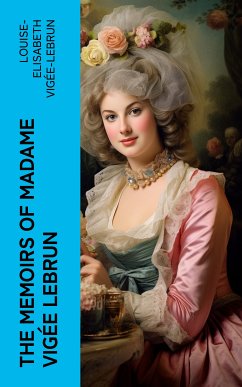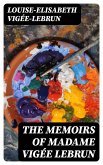This is an autobiography and memoirs of the extraordinary life of Elisabeth Vigee Lebrun (1756-1842), one of the finest painters of eighteenth-century France. She was highly esteemed by painters at home and abroad and became one of the few women admitted to the French Academy at a time when a career as an artist was all but restricted to men. Due to this honor, she entered the higher society and got acquainted with both aristocracy and the greatest artists and writers of the day. Among the people she managed to see in her life, a reader will find Marie Antoinette, Catherine the Great, Benjamin Franklin, and Lord Byron.
Dieser Download kann aus rechtlichen Gründen nur mit Rechnungsadresse in A, B, BG, CY, CZ, D, DK, EW, E, FIN, F, GR, H, IRL, I, LT, L, LR, M, NL, PL, P, R, S, SLO, SK ausgeliefert werden.









